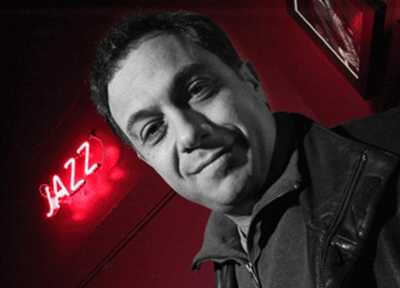
Ashley Kahn
In the spring of 1959, seven musicians got together in a converted church on 30th Street in Manhattan and made jazz history. Over forty years have passed since Miles Davis assembled his famed sextet to record Kind of Blue, and in that time the album has risen to the level of masterpiece.
In Kind of Blue: The Making of the Miles Davis Masterpiece, Ashley Kahn gives readers the unprecedented opportunity to enter the 30th Street studio and witness the creation of this remarkable album. Drawn from countless interviews, meticulous research and rare access to the master tapes, Kind of Blue is the most complete look at the album to date, describing the now-famous sessions, the trajectory of Davis’ career leading up to the recording, and the impact of the album, then and now, on listeners and musicians.
In our exclusive interview, Kahn discusses the significance of this timeless recording and his critically acclaimed account of one of the greatest moments in 20th Century music.
Interview hosted by Jerry Jazz Musician publisher Joe Maita.
_________________________
JJM What is your background?
AK My less-than-linear career path has taken me from (deep breath): writing behind a desk at a music trade publication right after college, to deejay, video producer and freelance writer in New Orleans, to #2 in a start-up outdoor public performance series called Central Park SummerStage (this past summer was its 13th year) to a long stint as road manager with music groups ranging from African music (Ladysmith Black Mambazo, Hugh Masekela, Lucky Dube) to rock (Paul Simon, Peter Gabriel) to jazz (Debbie Harry and the Jazz Passengers, Henry Threadgill, Cassandra Wilson, Greg Osby) to pop (Britney Spears). Most recently, I was music editor at the TV music channel, VH1 in their music news department. Along the way, I’ve been primary editor of one book – Rolling Stone: The ’70s; a primary contributor to another – Rolling Stone Jazz & Blues Album Guide; and a freelance writer contributing to a number of publications: New York Times, MOJO, Rolling Stone, etc.
JJM Who was your childhood hero?
AK That would be a tie between Willie Mays and Tom Seaver.
JJM Was there a particular biography you read as a child that provoked your interest in writing?
AK Not really any biography – I think where I began to consider taking up the pen (typewriter or whatever) was actually the science fiction bag: from short stories to classics like H. G. Wells and Jules Verne, and later Ray Bradbury, Frank Herbert and my all-time fave – Phillip K. Dick. When I got to college I was turned on to the razor-sharp elites of New York storytelling (S. J. Perelman, Dorothy Parker, A. J. Liebling) and still blame them with convincing me that a thesaurus is for reading as well as writing.
JJM Why this book? When did you begin dreaming about its creation?
AK In its initial conception, my written tribute to Kind of Blue was simply in the short form. I had penned a New York Times article in August, 1999 marking the album’s 40th anniversary while pursuing my other profession: tour manager. That summer I was working with the Britney Spears tour (talk about musical extremes!) I was recovering from an overnight drive from Sioux Falls, South Dakota to Chicago, Illinois and my cellular rang. It was my editor from the New York Times asking if he could pass my number on to a book agent who had called?
The conversation with the agent led to me putting together a proposal that answered the obvious questions about expanding the article into long-form: was there enough information? Would the surviving participants and witnesses – Jimmy Cobb and photographer Don Hunstein – participate?
The furious pace that led me from proposal to book deal to the actual research and writing left me little time for sleeping, let alone dreaming. (May all my proposals become real as easily and furiously.)
JJM What was the general tone of jazz prior to Kind of Blue?
AK Jazz in the ’50s was a music well on it way to splintering beyond recall. What had been a musical community divided simply between traditional (Armstrong), swing (Goodman) and bebop (Parker, Gillespie) was now a scene dealing with multiple fissures. As I mention in my book, the jazz scene had expanded and the older rubbed shoulders with more and more of the new. By the end of the decade, a jazz enthusiast’s LP collection was certain to reflect a variety including traditional jazz and swing-style soloists (Louis Armstrong, Jonah Jones,) big bands (Stan Kenton, Duke Ellington, Woody Herman), bebop stalwarts (Dizzy Gillespie, Sonny Stitt) and bebop transmuters (Thelonious Monk, George Russell), purveyors of Cool (Gerry Mulligan, Chet Baker), classically-inspired conceptualizers (John Lewis, Dave Brubeck, Miles Davis) gospel-fueled hard boppers (Art Blakey, Horace Silver) and avant-garde visionaries (Ornette Coleman, Cecil Taylor).
From a jazz lover’s perspective the sound of the period was, as I quoted writer Dan Wakefield: “The new sounds of Miles, Charles Mingus . . . and then there was the incredible ultimate cool synthesis of classical music with fugue-like jazz, the Modern Jazz Quartet.” During the late ’40s bebop had defined a particular niche lifestyle – a zoot-suited, extroverted, rapid-fire esthetic; ten years later, Miles himself wrote of the change: “All of a sudden, everybody seemed to want anger, coolness, hipness, and real clean, mean sophistication.”
The “tone” – if I can use that term loosely – among jazz musicians in the ’50s was one of elevation: the vanguard of jazz’s innovators sought to raise the music to a level occupied by the most highly regarded art forms. To command the respect and receive the rewards due artists creating on that level. “For the younger musicians, this was the way to react against the attitude that Negroes were supposed to entertain people,” said the MJQ’s John Lewis. “The new attitude was . . . ‘Either you listen to me on the basis of what I actually do or forget it.”
Who were the heroes of the age? There weren’t many; and some were dead, like Charlie Parker, and others had been transformed into entertainers, like Dizzy Gillespie. But of that leading cadre of jazzmen – Sonny Rollins, Thelonious Monk, John Coltrane, Art Blakey, Bill Evans, Horace Silver and (soon to come) Ornette Coleman – Miles Davis was easily the leading light.
JJM Where and when did the Kind of Blue sessions take place?
AK For a few hours on March 2 and April 22, 1959, Miles Davis convened his group in Columbia’s famed 30th Street Studio, a converted Greek Orthodox Church with generously high, vaulted ceilings noted for its natural acoustic resonance. On the first date, he recorded the three tracks that comprised Side A of the album, on the second date, they recorded the final two tracks on Side B.
JJM Is there any film footage of this recording?
AK A total of three rolls of black-and-white photographic film – plus about ten stills taken by the recording engineer — are the sum total of the visual record of the two Kind of Blue sessions.
JJM You were able to listen to the entire studio session. What were your expectations for the discovery of this part of the project and were they fulfilled?
AK As I mention in the book’s introduction, I went into that listening session hoping to answer as many questions as possible: what were the musicians like when they made this glorious album? Where they loose and relaxed, or was Miles cracking the whip? Did they need a lot of coaching or was it 1,2,3 and everything flowed? Was the album all the result of first and only takes? What the heck did they talk about when the music stopped?
One thing that access to the original master session tapes definitely helped to debunk was the one-take myth regarding Kind of Blue: Miles just didn’t walk into the studio on those days, count off the tunes and create magic. What did happen was that Miles crafted the “head” arrangements of each tune – carefully working and reworking the opening theme . . . I could hear him talking to different players, suggesting different approaches. But once the opening theme came together – whatever else happened during the solo sections – that became the final take.
Through close listening of the master tapes, I discovered a more three-dimensional person in Miles’s personality than I had ever encountered before. In the closed and comfortable territory of the music studio, his pleasant nature shone, contradicting his hard-nosed reputation as a task-master and stern band leader. He encouraged his sidemen through some rough spots, suggesting alternate approaches and often joked with his producer about squeaking floors and leaving extraneous noise on the final take.
JJM How spontaneous was the playing? Was it totally unrehearsed?
AK A significant portion – a vast majority – of the music on Kind of Blue is the result of spontaneous creation. Miles would not have had it any other way. The real question is how did he balance the idea of the familiar with the unfamiliar to achieve what he was looking for.
I believe that by early 1959, the members of Miles’s sextet were well aware of his style of creating music in an impromptu fashion. In one interview, Cannonball talks of how he respected Miles because he would limit his comments to his sidemen by telling them what not to do rather than defining what they should exactly play. Evans speaks of how mid-session in ’58 – on “On Green Dolphin Street” I believe – Miles reconstructed a passage for the pianist to play, simplifying its form but accentuating a certain mood to the piece in the process.
Jimmy Cobb told me of how Miles would stalk around the studio while they were actually rolling tape, often leaning close to a non-soloing musician and whisper some instruction in his ear. (The slightly distracting – and challenging — effect on the soloing musician would not have been lost on Miles.) In one case, during the recording of the album Milestones in early ’58, he whispered something to his longtime pianist Red Garland. Garland stood up, stormed out of the studio and never recorded with Miles again. Miles played piano himself on the rest of the session; not long after, Evans was chosen to replace Garland.
As for the Kind of Blue compositions themselves, there is ample evidence that two of the tunes – So Whatand All Blues – had been worked out on the bandstand prior to the recording (though it was at the session itself on April 22 that Miles opted to record the latter in waltz time rather than straight 4/4.) But the unfamiliar structure and harmony of the album’s two most non-traditional tunes – Blue in Green and Flamenco Sketches(not surprisingly, Evans most important contributions) – certainly challenged the band. On the tape – as Herbie Hancock pointed out – one can almost feel the slowed-down, careful, methodical approach as the players stepped into this “new uncharted territory.” In that wonderfully revealing photo of Cannonball’s music stand, Evans’s offhand instruction on Flamenco Sketchesto “play in the sound of the scales” shows how he tried to assist the sidemen: he wanted Adderley to play not religiously within each scale – as a classical musician would – but to improvise and allow his own voice to meld with the structure and sound of the composition. (A better five-word definition of modal jazz has yet to be written.)
As well, on the master tapes one can hear Miles admonishing – then assisting – young Paul Chambers with the problems he was having following the form of each. “Open your eyes Paul” he says at one point, urging the bassist to watch Evans’s hands to gain a guide through the unfamiliar structure.
As to what the musicians expected before they hit the studio, it would seem only Bill and Miles knew exactly what they’d be attempting; Jimmy speaks of being told little, and Wynton Kelly even less – since he was so surprised to find Evans at the session.
Challenge, surprise, spontaneous reaction and creation: those were the keys to Miles’s approach.
JJM How many alternate takes exist?
AK Only one complete alternate take exists – the first take of Flamenco Sketches – included on CD versions of Kind of Blue since 1962.
JJM Miles’ players on the session made $65 according to a Columbia memo. Is that all they ever made on this recording?
AK That memo reflected only one session. Near as I can figure it, all of Miles’s sidemen made roughly $130 for the two sessions combined. But another memo reveals that Miles insisted – somewhat uncharacteristically – that the three senior members of his group (Coltrane, Cannonball and Chambers) receive an additional $100 each. After a little back and forth between various departments at Columbia Records, the checks were cut. Final amount paid to Coltrane, Cannonball and Chambers: less than $250 each. Evans and Cobb: less than $150 each. Wynton Kelly (who performed only on the first sesion): less than $75.
JJM At the time Miles Davis invited John Coltrane back into his band in the late 50s group, Miles’ music was, as Coltrane biographer John Fraim described it, “sophisticated simplicity”. Coltrane’s music at the time was ever increasing in its complexity. In retrospect, was this merger of Coltrane into his group a calculated move by Miles or was it a “beautiful accident”?
AK Definitely the latter. Though Miles was well aware of where Coltrane had been heading after he kicked the tenorman out of his group in early ’57 (he often caught Coltrane playing with Thelonious Monk at the Five Spot that summer), he could not have known exactly what it would be like to have him in a sextet situation with Cannonball demanding time to solo. He only knew it would be good.
As to the effect that Miles modal “simplification” of jazz (in no way should that modifier denigrate the technical demands or emotional depth of modal jazz) would play on Coltrane’s own career, Miles (Coltrane or anyone else for that matter) would have had no inkling whatsoever. Modal jazz, as introduced in Miles’s group, provided the lynchpin between Coltrane’s energetic “sheets of sound” approach of the late ’50s – nonstop, long-winded, onstage experimentation – to the more rhythmic and spiritual exhorations of the early ’60s.
There’s an import CD available here in the US of Miles’s sextet (Sonny Stitt filling in for the departed Adderley) live in 1960 in Sweden. Coltrane’s solo on the version of “So What” thereon provides an obvious hint of the unfettered spirituality to come.
JJM Did Miles plan this album around the piano playing of Bill Evans?
AK Absolutely. With none of his usual reservation when discussing other musicians’ input and contribution, Miles says so in his autobiography: “I . . . planned that album around the piano playing of Bill Evans.”
JJM The piano used by Bill Evans for Kind of Blue what other recordings were made with it?
AK Very hard to say as there were more than a few pianos at their disposal – and no record of how and when pianos got traded out. Let’s just say that as a result of hearing that it was the “jazz piano”, the same one Dave Brubeck “beat the shit out of” (according to one studio engineer,) there’s a good chance that Brubeck’s immortal “Take Five” was recorded on it as well.
JJM There appears to be some dispute about who actually wrote the songs on Kind Of Blue Is it clear who actually composed the songs?
AK In his celebrated liner notes to the album, Evans gives wholesale credit to Miles for composing all the album’s tunes. Whether that was the way things were done back then – that sidemen simply forked over all their own contributions to the bandleader – or Evans simply felt the urge to honor Miles, official songwriter credit (and all proceeds) to this day belong to Miles.
Years later, mostly in private discussions, Evans maintained his credit-due; on various albums, he’d record material from Kind of Blue – such as Blue in Green- and ensure that composer credit read: “Davis-Evans.” Miles himself, though admitting the pianist’s role in shaping the album as a whole, never conceded that Evans was due any composer credit.
There was definitely no indication during the session that there was any contention – or even discussion – regarding the issue of composer credit. The musicians were all so in the moment that the only focus was the musical performance itself. So any dispute regarding who wrote or composed what only came later.
On the master tapes, there certainly exists the suggestion that Evans may have functioned as a co-composer on Blue in Green. Unlike the preparation for other tunes, as “BIG” comes together one can hear Evans instructing various musicians and unlike other tracks, actually counting off the tune. He is also in discussion with Miles on important compositional questions as to the structure and duration of certain segments of the song.
However, the most compelling argument supporting Evans’s composer or co-composer role remain the recordings of music pre-dating Kind of Blue, which feature musical pieces that would end up as part of the structure to both Flamenco Sketches(“Peace Piece” on Evans’s album Everybody Digs Bill Evans) and Blue in Green (“Alone Together” on the Chet Baker album Chet).
JJM Which of the recordings was most difficult for the musicians to create?
AK My guess would be Flamenco Sketches; no surprise it’s the only track (of five on Kind of Blue) that has two complete takes. It was the most “modal” on the album, and the least familiar to the band. The instructions to the soloists were simple – play off of a cycle of five scales – then hand off to the next musician. But the tune had no pre-established melody, no chord structure to play off – not even a distinctive opening arrangement like So What or All Blues – just a slow bass pattern and piano vamp (“ostinato” in musician parlance.)
On the master tapes, one can hear the trouble the rhythm section – particularly Evans and Chambers – are having in bringing it together. Miles at one point admonishes Chambers for not keeping up, then suggests a simple solution: keep your eyes open and use Evans’s hands as a guide. The next take was the final take.
JJM How much influence did the producer, Irving Townsend, have on the project?
AK As far as the music itself almost – none. His job was, purely and simply, to faithfully and accurately record what transpired in the studio. But as far as everything else was concerned — getting the band into the studio, keeping the session moving within budget and time constraints, getting everyone paid, transferring the music from master tape into finished marketable album form – it was all Townsend.
JJM How significant was it that Fred Plaut, the engineer of the session, primarily engineered classical music recordings?
AK Back in 1959, almost every engineer worked with primarily acoustic instrumentation – from symphony orchestras and big bands, down to small jazz combos. In this sense, Plaut was not working with anything foreign – so it’s fair and accurate to say that his ability and familiarity with the studio and its many uses was important.
JJM What were the immediate reviews of the album like?
AK Almost universally positive. Metronome was the odd journal out, bemoaning its simplicity and reductive sound. The Saturday Evening Post was the most thrilled…
JJM How much influence did Kind Of Blue have on subsequent jazz recordings?
AK Yeesh. This is the whole reason for Chapter 6 in my book, and I still feel like I could have written so much more. As Herbie Hancock told me: “Name me some music where you don’t hear echoes of it!” Suffice it to say that to this day, it would not be uncommon to overhear a bandleader say “now on this ballad, I want a Kind of Blue feel”. It remains a standard by which other jazz recordings are measured.
JJM Based on their works following Kind of Blue, would you say it was Miles or Bill Evans who best continued to communicate the modal tone set on Kind Of Blue?
AK I think this question needs parsing. “Modal” — as a means of exploring musical expression in a manner apart from chord changes of the old jazz tradition – became the springboard for both Miles Davis’s late ’60s fusion experiments (think Filles De Kilimanjaro, In a Silent Way and what they inspired) as well as Coltrane’s free excursions (Impressions, Ascension, etc. etc.) Of Miles’s sidemen on Kind of Blue, Evans was probably the least consistently modal in the structure of his musical pursuits after Kind of Blue, but as far as “tone” – that is, the subdued and late-night feel of Kind of Blue – he remained truer to the idea of leaving space, subtlety and nuance in the music.
As to their relative paths after Kind of Blue, pianist Brad Mehldau offered me his take in an email:
“I’ve always felt that Evans’ and Miles’ approach on this record were a one-time affair, something that was an end in itself. In a simple, reductive sense, as a soloist, there’s not too much more you can do than Miles if you decide to stay within the mode, on a tune that only uses one mode in two different keys. And good luck on approaching that level of lyricism, melody, and phrasing.
Evans’ case is interesting because he didn’t pursue a strictly modal approach by any means after this date with his own trio. He was much more concerned with functional harmony. The melodic approach that he honed down over the years came from bebop – his own, highly personal take on bebop. His deepness and beauty (for me) is how he harmonizes those melodies with both hands, creating a rich, multidimensional texture on the piano – I’m thinking of a late record like ‘You Must Believe in Spring’, for example. He returned to melodic voice-leading, but upped the ante. ”
JJM What social significance did the release of this album trigger? Did it signal an opportunity for African-Americans to play jazz other than “Cole Porter standards”?
AK I believe Kind of Blue was part of decade-long trend of African-Americans adding their own contributions to the general jazz songlist; the Modern Jazz Quartet’s “Django”, Sonny Rollin’s “Oleo”, Ornette Coleman’s “Lonely Woman” and of course, the entire Thelonious Monk and Charles Mingus songbooks were other crests on this general wave of shared cultural assertion.
The real social significance of Kind of Blue was that within a year of its release it was the first handshake between musicians in a wide variety of situations. So What and All Blues became the tunes by which players – be they jazz, pop or R&B; black, white or other – first jammed together, testing each others mettle, getting to know each other. Just knowing the tunes themselves necessitated a certain degree of cultural hipness. If one could at least work out the theme and muddle through the modal simplicity and sound halfway interesting in the solo section, you were OK.
JJM How did the album get the title of Kind Of Blue?
AK Miles biographer Quincy Troupe told me that when Miles chose the title he definitely meant it to be a comment on the bittersweet nature of the African American experience. In addition – as he had on the previous sextet album Milestones – Miles was not above a well-crafted double-entendre, and as an album name “Kind of Blue” certainly offers more than one meaning. The music is both melancholy and sort of “blue”, and is loosely structured in many cases on the form of the blues (particularaly All Blues and Freddie Freeloader)
JJM How was the cover art agreed upon? Did Sony have any answer for why they chose a different photo for the original CD version of Kind Of Blue than the Lp version?
AK Nope – Sony never had an answer because all the people working there now in their reissue department (Sony Legacy) was not involved with what transpired over fifteen years before. The “responsible” parties for choosing an inappropriate photograph for the early ’80s reissue – if any individuals can be pinpointed – I believe must be forgiven simply because of the constrictive corporate mentality of that era: hurry up, get it out and as cheaply as possible. With the original artwork missing, an art director probably grabbed the first available and easily licensed photograph he could find, and no one questioned it. Unfortunately, it turned out to be chronologically inaccurate and backwards!
JJM Was Kind Of Blue Miles’ favorite album? Did he feel it was the recording that best represented his work?
AK Miles, the intrepid musical explorer, typically never looked back. He was always pushing forward to newer sounds and styles. His career followed a path of tireless experimentation, shifting every five to ten years. As a result, he was responsible in helping to sire more new directions in jazz and improvised music than any other single artist. His leadership gave birth to cool, hard bop, modal and fusion.
As such, though he admitted at various points to being partial to past recordings – a session on which Charlie Parker played tenor saxophone, his first collaboration with arranger Gil Evans on the album Miles Ahead – Miles did not have any favorite albums. More than almost any person I know of or have studied, he lived almost exclusively in the here and now. In fact, I quote him in the book stating in 1986: “Kind of Blue – those things are there. They were done in that era, the right hour, the right day, and it happened. It’s over, it’s on the record . . . Like me for what we’re doing now.”
JJM Where do you go from here? What is your next project?
AK Other than the usual freelance writing – just finished a feature on Ken Burns’s documentary Jazz for TV Guide – I have a number of book proposals I’m working on. One’s a jazz bio (or autobio) but I can’t say more . . . and the other will hopefully be the entire history of a record company. Sorry to be cryptic – just want my agent to seal the deal first!
_________________________________
Miles Davis products at Amazon.com
_______________________________
*
If you enjoyed this interview, you may want to read our interview with Ashley Kahn on John Coltrane’s A Love Supreme.







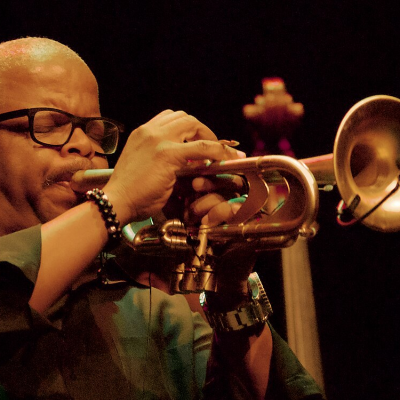

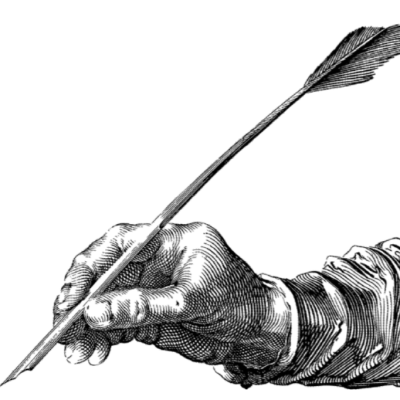



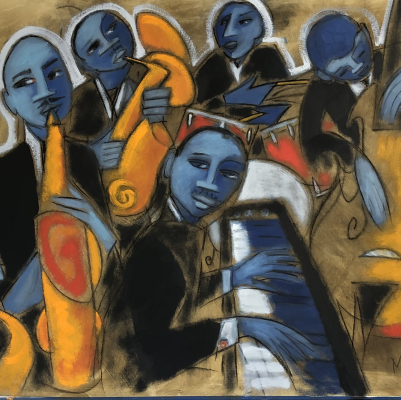

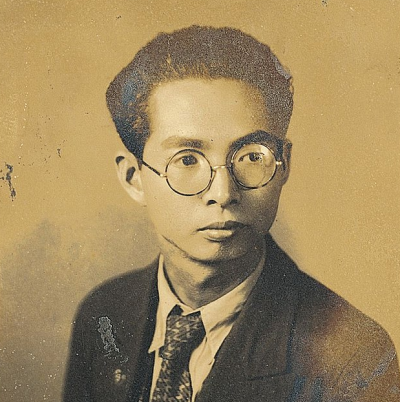



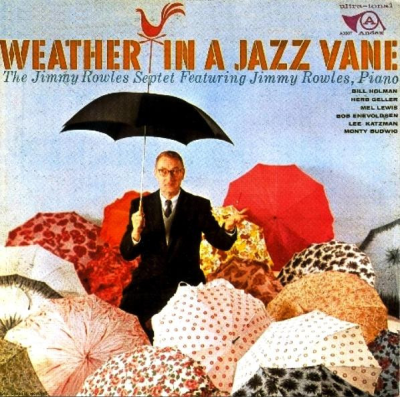


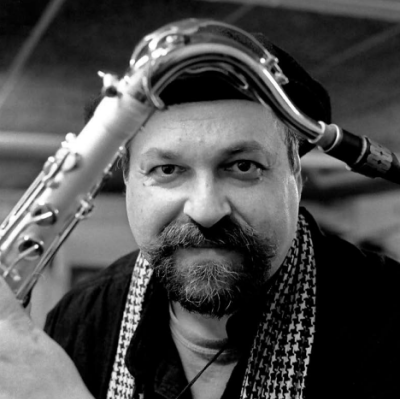


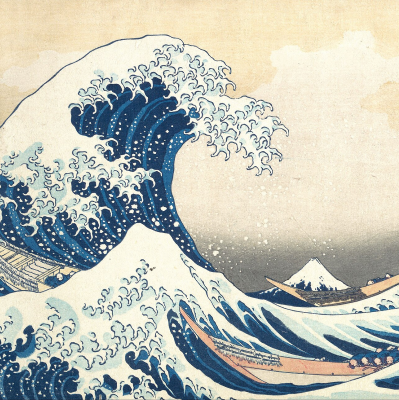

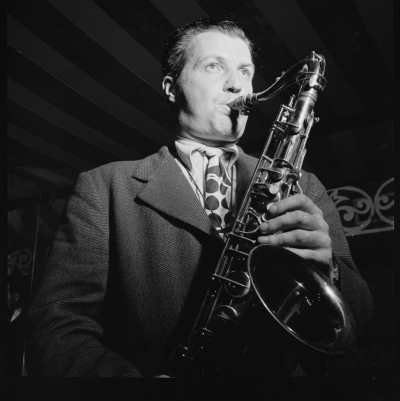

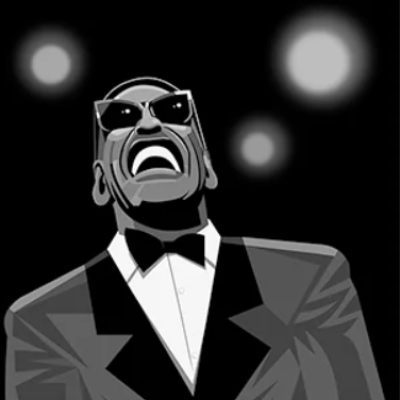






This interview helped me to strengthen my existential response to the “here and nowness” of the music in the album. I especially found it useful, as well, to learn of the fees paid to the musicians for their work in this epoch album.
This interview helped me to strengthen my existential response to the “here and nowness” of the music in the album. I especially found it useful, as well, to learn of the fees paid to the musicians for their work in this epoch album.